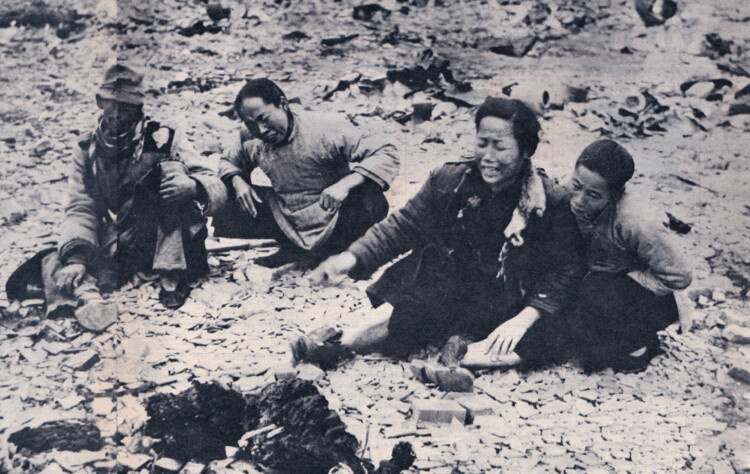The term “collateral damage” is frequently bandied about in military parlance, a sterile phrase that scarcely hints at the profound human tragedy it represents. The critical question, both morally vexing and deeply unsettling, is: what constitutes an ‘acceptable’ civilian loss in war?
The debate around civilian loss in war is neither new nor straightforward. Throughout history, societies have grappled with this question. They’ve sought to delineate the line between the tragic inevitability of war and the inexcusable loss of innocent lives.
The ability to minimize civilian casualties has increased with the evolution of warfare technology. However, does this technological advancement obligate nations to ensure zero civilian harm? Or is there a gray area where the death of innocents is justifiable?
The Weight of Civilian Lives: Past and Present
Throughout history, armies have predominantly waged wars on designated battlegrounds. Think of the vast plains of Waterloo or the trenches of World War I’s Western Front.
Yet, as the 20th century progressed, warfare began to morph. With the advent of industrialized conflict, urban centers became significant targets. The tragic bombing of Guernica during the Spanish Civil War in 1937 and the harrowing Blitz of London in 1940 are testaments to this shift.
However, the epitome of civilian loss in war during this era is perhaps best exemplified by World War II’s atomic bombings of Hiroshima and Nagasaki in 1945.
Over 200,000 civilians, most of whom had no direct involvement in the war, lost their lives in these two cataclysmic events.
Fast forward to more recent times. Conflicts have further entrenched themselves in urban settings, as seen in the Battle for Aleppo during the Syrian Civil War or the urban combat zones in Mosul, Iraq.
While today’s militaries possess laser-guided munitions and drones that promise pinpoint accuracy, the reality remains sobering. In 2017, a report from Airwars estimated that coalition airstrikes against ISIS in Iraq and Syria might have led to a minimum of 5,961 civilian deaths.
Civilians: The Unintended Targets?
One might argue that no civilian loss should ever be deemed “acceptable.” After all, these people have not chosen to fight, whose daily lives are suddenly upended by conflicts often beyond their control.
From World War II’s bombing of Dresden to the recent drone strikes in the Middle East, civilians often find themselves inadvertently in the line of fire.
Yet, on the other side of the debate, some military strategists argue that it’s impossible to conduct a war without civilian casualties. This is the case, especially given the complexities and unpredictabilities involved.
They might ask: What if a known terrorist hides in a densely populated area? What if destroying an enemy’s infrastructure (which might inadvertently hurt civilians) could save countless lives in the long run?
The Technology Conundrum

With its cutting-edge advancements, modern technology promises an era of precision in warfare.
For instance, the MQ-9 Reaper drone, widely used by the U.S. military, can target specific rooms within buildings. With their advanced navigation capabilities, the Tomahawk cruise missiles can hit targets within mere meters of their intended mark.
Meanwhile, surveillance systems, like the Global Hawk drone, can provide real-time detailed visuals and data about potential targets from altitudes above 60,000 feet.
This fusion of technology hands nations unprecedented power. It potentially reshapes the dynamics of civilian loss in war by drastically reducing unintended casualties.
The Caveat
Yet, a significant caveat looms. Harnessing such potent capabilities demands heightened responsibility.
Consider the 2019 incident near Baghuz, Syria. Despite having advanced technology, an airstrike reportedly led to multiple civilian casualties due to a misjudgment in interpreting surveillance data.
The pitfalls are many. Over-dependence on technology, erroneous intelligence inputs, or plain human oversight can culminate in profound tragedies. It emphasizes that technology, while transformative, is not the universal solution.
Setting the Bar: International Laws & Protocols
Several international laws, like the Geneva Conventions, set guidelines about protecting civilians during war. These laws prohibit deliberate attacks on civilians and mandate that warring parties do everything feasible to verify that targets are indeed military objectives.

But ‘feasibility’ is a broad term. What’s feasible for a superpower with advanced technology might differ for a smaller nation.
Moreover, enforcement of these laws is another matter entirely, with violations often going unpunished or rationalized as necessary for broader strategic goals.
Towards a More Humane Future
The conversation about civilian loss in war has real-world implications. Every civilian death is a life cut short, a family shattered, and a reminder of the actual costs of conflict.
It’s a stark reminder that while technology offers transformative solutions, it’s not a complete safeguard. Its very power mandates an even greater degree of caution and responsibility.










COMMENTS
You must become a subscriber or login to view or post comments on this article.